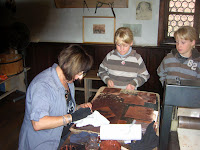It was a four hour trip from Rheinbach. I took the fast train (ICE), relaxed, read and watched a part of Germany I didn’t know from my window.

I arrived on Thursday evening and we spent a pleasant getting-to-know-you evening over a meal in an Italian restaurant.
The next morning everybody was out the door early. Niko and Helen had to work. My job was to explore Nuremberg. Helen works there so, as we travelled, she told me that the city – a walled city dating from the 15th Century – had been almost entirely destroyed by British bombardment at the end of World War II and been rebuilt using the original stones. I learned later that the reconstruction, undertaken by the municipality itself, had been completed in twenty five years. They wanted to preserve their history without making the town into a museum. It is now a city of about 20,000. History is everywhere but so are tourists and students. Nuremberg together with Erlangen, where my friends live, is home to one of the biggest universities in Germany.
I walked down the main pedestrian mall.

until I came to the market square.

I saw the Schöner Brunnen (Beautiful Fountain)

where people turn a brass ring for luck

I continued my touristly duty visiting various churches along cobblestone streets. Then, I went to meet Helen, stopping first to see another, more modern, fountain called the Marriage Merry-go-Round
It shows a marriage from courtship to death.

This is one of the more genteel parts of the fountain.

Helen and I had sausages and sauerkraut for lunch. Then we were off to explore more of the City. We stopped at the Albrecht Dürer house where Frau Dûrer herself, in an audio guide, explained the life of the 15th century artist. They still make copies of famous Dürer prints in his old studio.

Finally – just before ice-cream – we saw the Kaiserburg (the Imperial Castle).

A great day.
Saturday was just as pleasant. Niko and I went to visit Bamberg – about an hour’s drive away. It is one of the few German cities that survived WWII (because of a nearby Artillery factory) There is still a military connection today, as over 4000 American servicemen and women and their families live there.
Bamberg has been known since 902. We had a beautiful day wandering its streets (and we were not alone.) The following pictures will give you a tiny taste of all that I saw.
Arriving in Bamberg

Bamberg Rooftops

Rosegarden behind Cathedral

The Cloisters

Saturday evening, we had a farewell feast in one of Erlangen’s many restaurants. This university city of about 100,000 has been known for over 1000 years but, I learned, its real history began with the arrival of Huguenots from France. Louis XIV’s politics populated a good part of the world!
Sunday, we had time for a leisurely walk in the neighborhood


before I was driven to Nuremberg to catch my train back to Paris, tired but happy. Hope you’ve enjoyed the trip, too.


























